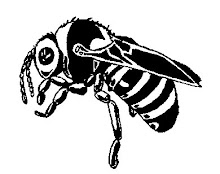


Black-eyed Susan(Rudbeckia hirta)
Found throughout most of the United States and a common native plant, the Black-eyed Susan is easily recognized by it's two to three inch yellow flowers, sometimes turning brown toward it's brown, cone shaped, protruding central disk. Reaching heights of three feet the stems and leaves of the Black Eyed Susan are prominently hairy
Blooming from spring into summer, the Black-eyed Susan is found in small to medium colonies on prairies, along roadsides, in fields and other open areas.
The hardy Black-eyed Susan, heat and drought tolerant, is easily grown and does grows well and is popular in garden settings.
As with most wild flowers, insects and butterflies find this flower an important source of food.
It is unclear why the Black-eyed Susan is more commonly called Black-eyed rather than Brown-eyed since the protruding central disk is brown.
The leaves of this plant has been used in herbal medicines and the petals to produce yellow dye.
Rarely, the Black-eyed Susan appears to have co-joined flowers. The flowers having this co-joined appearance are called faciated. This condition is thought to be caused by a bacteria. Faciated flowers are found among other plant species.







No comments:
Post a Comment